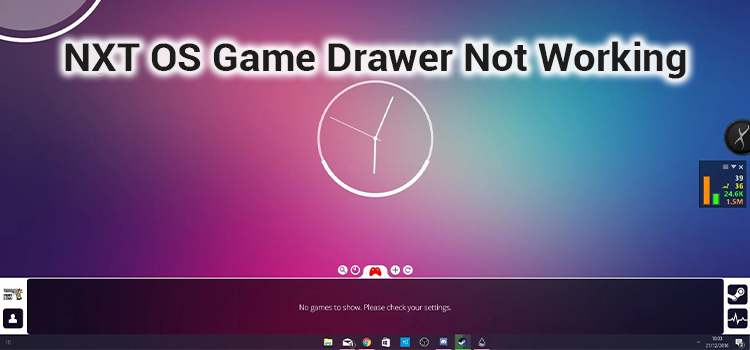Features of blockchain that make it a reliable tech innovation
Blockchain emerged as a disruptive technology and has established itself as a reliable innovation due to the various utilities it provides. More often than not, those getting into the crypto space confuse blockchain with bitcoin, but the two are different. Bitcoin is a crypto that works on the decentralized ledger, namely the blockchain, whose founder was Satoshi Nakamoto. Blockchain is not a singular advent; it combines three technologies, including cryptographic keys, a digital ledger, and a peer-to-peer network, delivering a solid result. Simply put, a blockchain is a digital record of transactions that are spread across a network of computer systems. Let’s take a look at its features to understand why this technology is revolutionary.

Faster Settlement
Unlike traditional banking systems, blockchain provides faster settlements. This essential quality of the blockchain has many benefits and is one of the many unparalleled features that make it exceptional. Conventional banking systems are slow, taking days until the transactions are completed. This is one of the main reasons why banking institutions must modernize their systems. However, blockchain helps overcome this issue, saving time and money and providing ease to customers. For instance, executing a transaction on the Ethereum blockchain can be done in a few steps; however, to do so, you need a balance of ETH in your wallet first, and checking the current ethereum price will help you grab the best opportunities. Blockchain transforms banking by eliminating the need for intermediaries and providing a secure ledger, improving the efficiency and speed of transactions.
Decentralization
In a blockchain network, no central authority controls or oversees the system. Instead, it is maintained by a network of nodes distributed across the network. This is one of blockchain’s most essential features that give it the status of disruption. Due to its decentralized nature, blockchain offers many benefits, including enhanced security, as the operations are automated and don’t require human intervention. Moreover, it doesn’t have any point of failure, making the network more resilient to attack. The assets and data are stored across multiple nodes, so the network can still function if one node fails. Moreover, the network provides greater transparency and accountability, as all transactions are recorded in a public ledger that is visible to everyone. Another great benefit is that users have complete control over their data and don’t have to rely on an intermediary to manage their assets.
Immutability
Immutability is one of the key qualities of blockchain technology that makes it a secure and reliable platform for record-keeping. Once the data is recorded on the blockchain, it can’t be altered, thus ensuring the transactions are tamper-proof and permanent. This feature helps prevent fraud, ensuring the integrity of the data stored on the blockchain. Plus, it makes the decentralized ledger reliable for different use cases like financial transactions and supply chain management. Immutability is linked with the presence of nodes in the blockchain, which are machines running the software to check and preserve the entire record of the transactions within the network. Each network node stores a copy of the digital ledger, and each node verifies a transaction before it gets added to the network. No group of transactions will appear on the ledger unless most nodes approve them. All the validated records are final and can’t be modified or deleted by any user on the network. It is easy to understand why this feature of the blockchain solutions can help eliminate corruption. If businesses integrated this technology into their internal networking system, they wouldn’t have to worry about the data being hacked or stolen.
Enhanced Security
Since blockchain is decentralized and doesn’t rely on a central authority, it has no single point of control or failure. Plus, the system provides an extra layer of protection by using encryption through cryptography and hashing. Encryption makes the entire process on the network more secure, providing a more trustworthy space for users than Web 2.0. The blockchain verifies and updates itself every few minutes, which helps create a self-reviewing and stable system. The data is incorporated inside the network, meaning everyone can see it. Any attempt to change the data on the blockchain would require considerable power computer before the other parts of the network could react, meaning that hackers have difficulty compromising the network. The combination of public-private keys, hashing algorithms, and consensus mechanisms creates a secure blockchain technology.
Increased Capacity
Blockchain technology increases the network capacity, providing a more solid system than some devices in the centralized system. Due to its enormous capacity, the technology ensures improved security, as the system can’t be shut down. Despite their increased security, most systems are prone to hacking, but that’s not the case with the blockchain network, as the nodes verify the transactions. Blockchain technology does not involve a single computing device but rather an array of computers that collaborate linearly.
Consensus Algorithms
The decentralization of the blockchain is successful because of its consensus algorithms. This is a vital component of the ledger and a unique trait. Consensus implies a validation process in the group of active nodes that contributes to the network’s decision-making process. Moreover, it enables the network to reach decisions quickly and impartially and helps ensure the nodes have the same view of the ledger. Different consensus algorithms offer different trade-offs between security, efficiency, and decentralization. Proof-of-Disrupting f-Work and Proof-of-Stake are two of the most widely used consensus algorithms, but there are many others as well, each with its own advantages and disadvantages. The consensus algorithm is a crucial component of blockchain technology, and without it, the network would lose the key characteristics that make it valuable. Miners and network validators use the consensus mechanism to validate transactions and add new blocks to the chain. For example, in the PoW consensus, miners must find the unique hash by solving complex computation problems. They are incentivized to validate transactions honestly, as they receive rewards for adding new blocks to the chain. Once a miner finds the correct hash, the transactions in the block are validated and added to the blockchain. The other nodes in the network then check the database to verify the validity of the transactions and reach a consensus on the actual state of the ledger.
The Bottom Line
Blockchain is a rapidly evolving technology that has the potential to disrupt different industries, including finance. The continued development of blockchain and its integration into different systems will likely bring new and improved features that can benefit individuals and businesses alike. Keeping up with the latest advancements is definitely advisable for those interested in this technology.
Subscribe to our newsletter
& plug into
the world of technology





